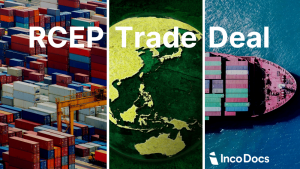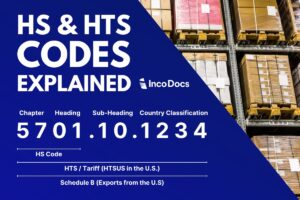The movement of goods through the global supply chain involves many different parties and processes. Shipping goods from a supplier, all the way through to the final location most often involved several modes of transport, loading, unloading or consolidation of goods.
Keep in mind that products may be transported by multiple modes of transport, including Road, Rail, Air or Sea, along multiple routes. The packages may be transported by various trucks, trains, aircraft or shipping vessels along multiple routes, where they can be constantly loaded, unloaded and re-loaded, stored at various ports, before finally reaching the final destination.
This process is quite convoluted, involves various elements of risk, and it takes a period of time for the shipment to reach it’s final destination. Additionally, how would we know if a shipment has been damaged, lost, stolen or put onto the wrong aircraft or shipping line?
In the past, tracking a shipment along the global supply chain that was in transit was a nightmare. Essentially, shippers would have to wait for confirmation that goods had arrived at a certain location, without receiving any detailed updates along the way. Only the shipping lines and freight forwarding companies would have access to information, and at times that was not even accurate, as the process involved so many manual, paper based processes.
Today, new technology is finally improving the global supply chain visibility. Over the past years, there has been a big push for digitization of the supply chain. Essentially, this involves new software and processes to replace the older manual, paper based systems.
One supply chain shipment can involve up to 40 different parties, which all have to share information in a timely matter. By having software systems that automatically collect data and information and are integrated to other supply chain parties provides a much higher level of insight into a shipment moving around the world.
Digital Freight Forwarders
Many traditional freight forwarding companies have heavily invested in their digital processes, to give their customers insight into where their goods are, and when they are due to arrive at the next location. A ‘Digital Freight Forwarder‘ is a term used to describe a freight forwarding company that uses digital technology to help their customers, and usually provides an online tracking tool to help track the progress of shipments.
Choosing the right freight forwarding company is essential to smooth shipments. Read the guide on how to choose the right freight forwarder for your business.
Shipment Tracking Systems
Marine Traffic allows users to get real-time information on the movements of ships and view the current location of ships in harbours and ports.
Marine Traffic is tracking software for the world’s marine vessel data. Marine Traffic displays near real time positioning of all types of ships and yachts worldwide. The software is connected to the largest network of Automatic Identification System (AIS) receivers to provide vessel positioning on a global map.
Marine Traffic enables users to monitor, review, analyze and plan shipping operations by providing information for a vessel or a port at a global level to provide the shipping, trade and logistics industries with actionable insights into shipping activity. Users can create and track their own ‘fleet’ of vessels to get instant insight and notifications of important shipping activity.
Additionally, Marine Traffic’s API allows external parties to build software applications using their real time data.
Managing Disruptions in the Supply Chain with Advanced Technologies
In the world of supply chain operations and management, disruptions are a big challenge. They can be caused by many things like bad weather, technical problems, port congestion and other physical asset delays. But with the latest tech like real-time GPS tracking and IoT, we can handle these disruptions better.
These tools give us a quick heads-up if something goes wrong. This way, we can make fast decisions to fix problems or change plans. By staying on top of disruptions, shipments keep moving smoothly. In short, these technologies are making our supply chains stronger and more reliable, even when unexpected things happen.
Improving Supply Chain Management with Advanced Tracking
Recent advances in supply chain tracking solutions are changing the game. Now, we can track shipments in real-time. This means we always know where a shipment is and it’s status.
For example, during the COVID-19 pandemic, this kind of location tracking was crucial for moving vaccines safely. Also, new tech makes it easier for everyone in the supply chain to work together. This helps in avoiding lost or damaged goods, saving a lot of money and time.
With these tools, companies can quickly deal with any problems that come up. This makes the whole supply chain more reliable and efficient.
Real-Time Location Tracking: A Game Changer in Supply Chain Management
Real-time tracking, powered by GPS (Global Positioning System), is a game-changer in managing supply chains. It gives us a clear view of where our shipments are at every moment. This is incredibly useful when goods are moving through different modes of transport such as road, rail, air or sea.
With GPS tracking, we can instantly spot delays or route changes. This means we can quickly handle any issues that come up. It’s not just about keeping an eye on things; it’s about making sure everything runs on time and safely. Real-time GPS tracking helps us ensure that goods reach their destination as planned.
Internet of Things in the Global Supply Chain
The development of IoT, or ‘Internet of Things’ is also helping to bring visibility into global supply chain shipments. IoT describes devices with sensors, processing ability, software and other technologies that connect and exchange data with other devices and systems over the internet or other networks.
Smart sensors can be placed onto packages, pallets and even shipping containers, to transmit real-time data on location, temperature, humidity and other data to improve supply chain processes and visibility. Read more about how IoT is improving the global supply chain here.






